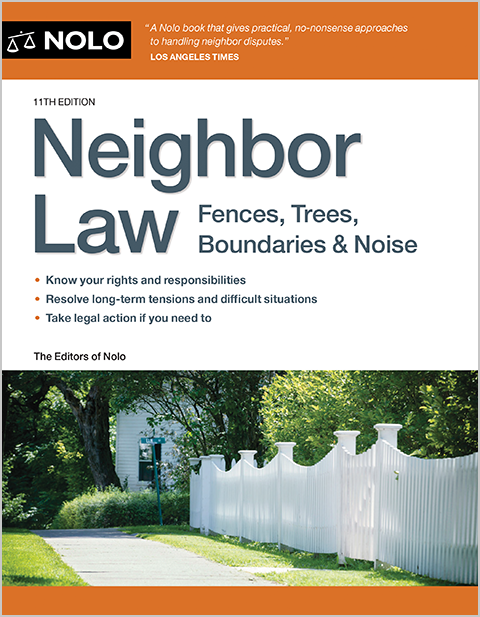What happens if an old problem rears its head after the home sale? Will this lead to the seller facing litigation brought by a disgruntled buyer?
In almost every one of the United States, statutes or court decisions mandate that real estate sellers advise buyers of certain physical and related defects in the home and property before the closing. The usual way of meeting these obligations is by filling out a standard disclosure form.
This is not a form to be filled out in a hurry. Most real estate sellers find that, especially if they've lived in their home for a number of years, they've gotten so accustomed to its various issues that they've all but forgotten them. That leads to an understandable concern among home sellers: What happens if an old problem rears its head after the sale? Will this lead to litigation?
Home Buyers Can't Sue Over New Defects
At the risk of stating the obvious, a house is a depreciating asset, upon which the passage of time will take an inevitable toll. A seller's disclosure form is in no way a guarantee or warranty to buyers that the house will remain pristine and perfect into the future.
If, therefore, problems emerge after the sale is complete; perhaps the slab suddenly cracks, or rodents decide to take up residence in the attic; that is not the seller's problem, and not a cause for the buyer to sue.
Unfortunately, exactly when a problem started and when the seller first "knew" about it are not always clear. If you fail to disclose past cracks in the slab that you've covered over or a recurring rat problem, the buyer might have a legal case against you for fraud or nondisclosure after the problem resurfaces.
What Defects Sellers Usually Tell Buyers About on the Disclosure Form
Let's take a step back, and focus on what you, as the home seller will likely be telling buyers. The standard disclosure form in most states is quite comprehensive. Filling it out completely can thus go a long way toward forestalling lawsuits.
The typical form asks the seller to state whether the property has any of various features (appliances, a heating system, a sump pump, a roof, a foundation, systems for electricity and water, and so on). It might ask for some information about them, such as year they were constructed or replaced. Next, the seller will rate or describe their condition.
The form might also ask about issues like pests, nearby environmental hazards, legal disputes concerning the property, and more, depending in part on common local concerns.
If a feature or question isn't on the list, you might or might not be required to address it. And there's often a box to check for "Unknown."
But many standard disclosure forms contain an "Other" box or section, and ask you to disclose any "material" defects that haven't already been covered elsewhere on the form. "Material" usually means a defect that's significant enough to affect the buyer's decision to purchase or the price they offer.
Experts usually advise that when in doubt, home sellers should disclose more information, rather than less. The smaller problems are less likely to deter buyers or lower the home's perceived value anyway, and they will appreciate your honesty.
Also realize that you as the home seller aren't required to proactively investigate for problems. The focus in making these disclosures is on issues that you actually know about. If a ten-foot spider has been living quietly in your attic, and you haven't looked in the attic since you bought the house, you can't be held responsible for failing to disclose its existence.
How Failure to Fill Out Disclosure Form Completely and Accurately Leads to Lawsuits
A home buyer might be able to take legal action against you for lying or obfuscating home defects within the disclosure form, most likely because you:
- rated a home feature as being in better condition than it was
- forgot to mention a material defect, or
- hid or lied outright about a material defect.
Notice the focus above on "material" defects. If you leave off a tiny scratch on a window pane, no lawyer will take the buyer's case for nondisclosure (and hiring a lawyer wouldn't be worth it for the amount at issue anyway).
As a side note, nondisclosure under the statute isn't the only basis upon which a home buyer might sue, and not all statutes or court-made precedent create a separate cause of action for it. Outright fraud or breach of contract are other possibilities in this context.
Challenges for the Buyer in Bringing a Lawsuit Over Home Defects
Lawsuits over nondisclosure are less common than you might expect, mainly for the following reasons:
- Unless repairs are expensive, buyers find that filing suit is not worth their time. (They might, however, send a demand letter requesting reimbursement, or request mediation or some similar measure.)
- It's much easier to file an insurance claim than a lawsuit. Not every issue will be covered by the buyer's homeowners' insurance policy, but many will be.
- The buyers will need to prove that the seller knew about the problem. No knowledge, no need to disclose. Unless you'd have to be foolish to have overlooked the problem, or you did something obvious, like hang a painting over a damaged wall during showings, proving seller knowledge can be tough.
- The buyers will also need to show that they didn't find out about the defect in some other way before the sale, but relied on your word. If, for example, your broker or the home inspector alerted them to the defect, or it was in plain sight and obvious to anyone walking through the house, they're going to have trouble suing for nondisclosure.
By filling out the disclosure form completely and honestly, you should be able to move on to your next abode without worrying about eventual calls from lawyers representing the home buyers.
Talk to a Lawyer
Need a lawyer? Start here.
How it Works
- Briefly tell us about your case
- Provide your contact information
- Choose attorneys to contact you
- Briefly tell us about your case
- Provide your contact information
- Choose attorneys to contact you


